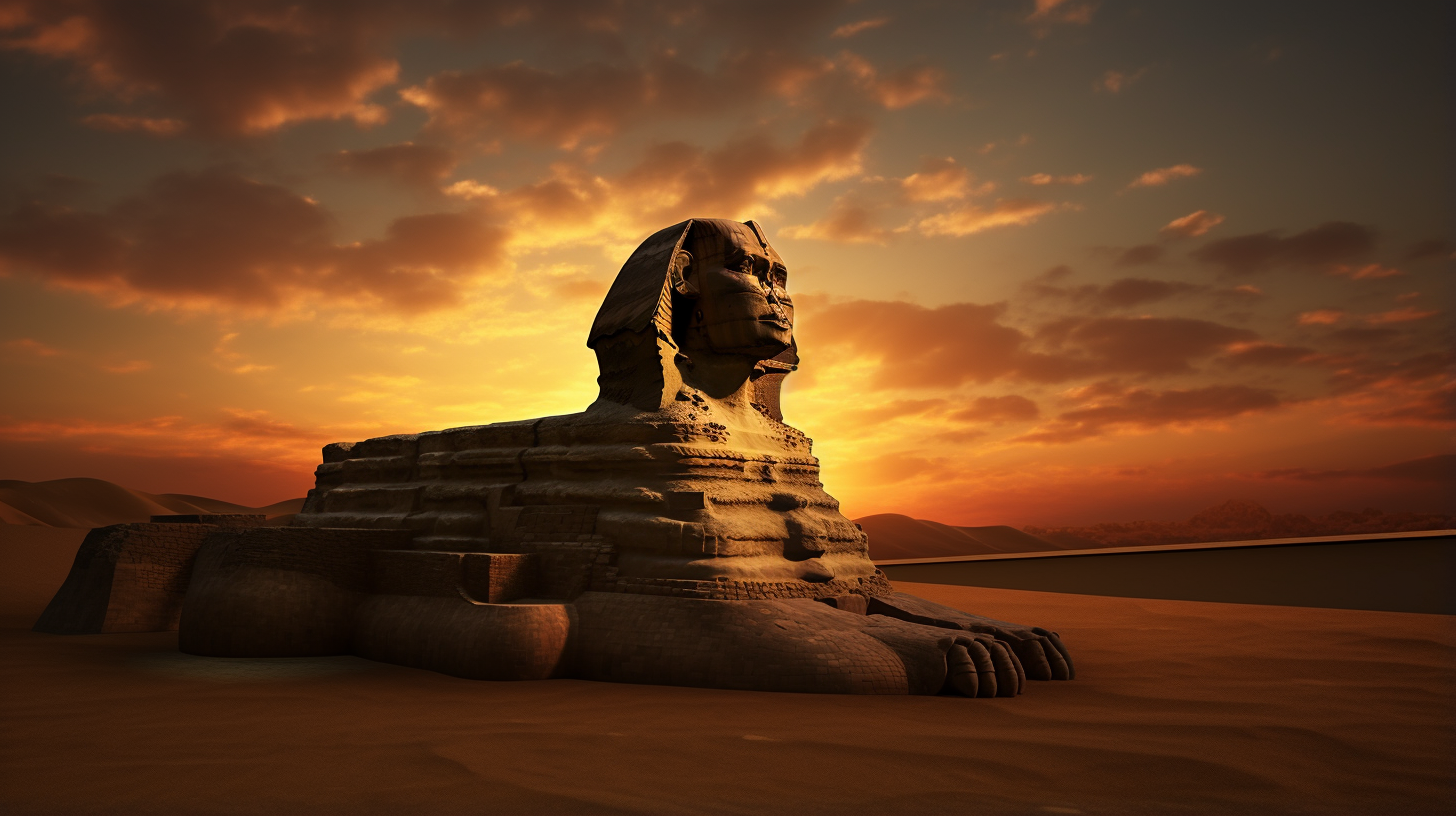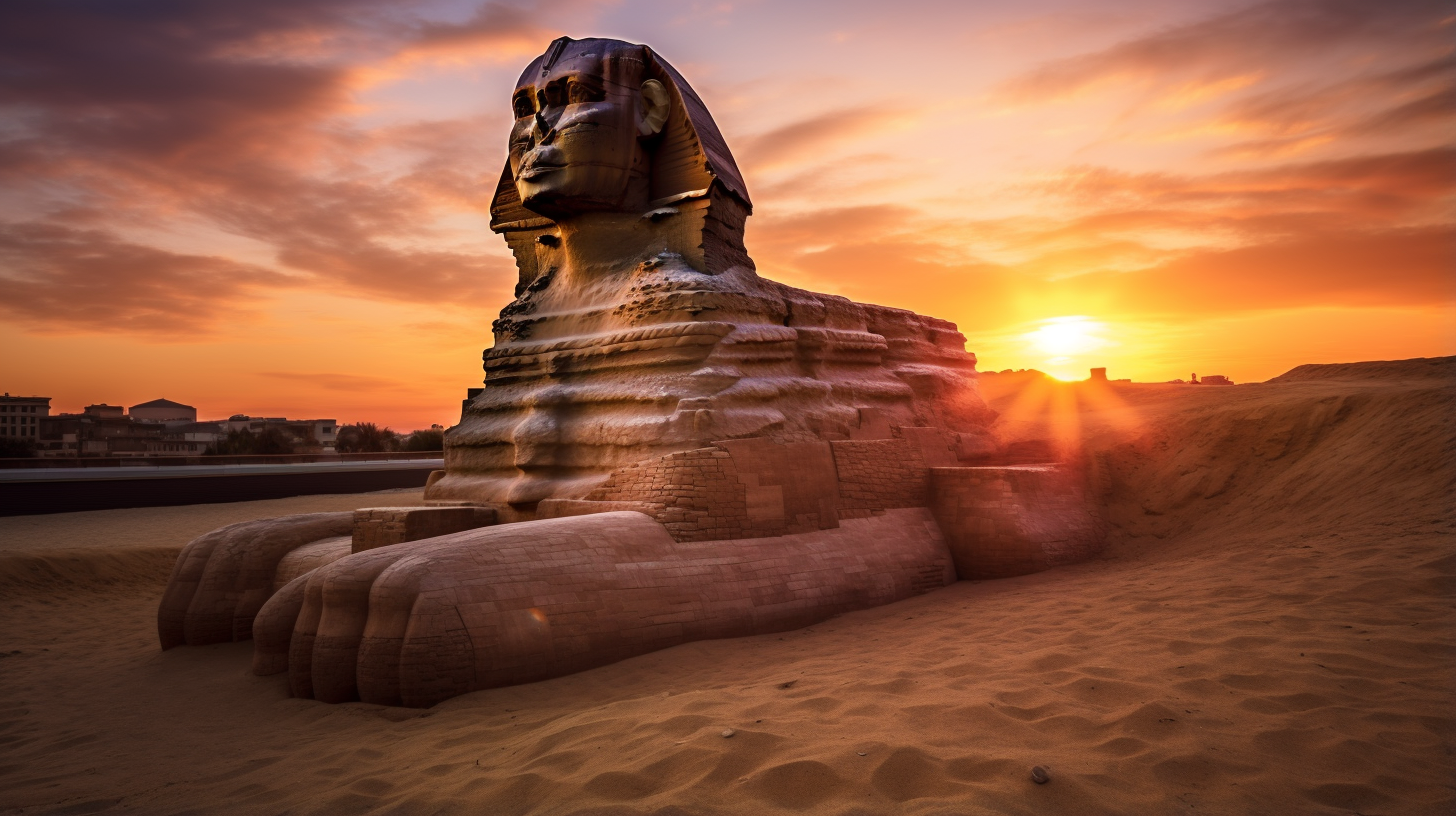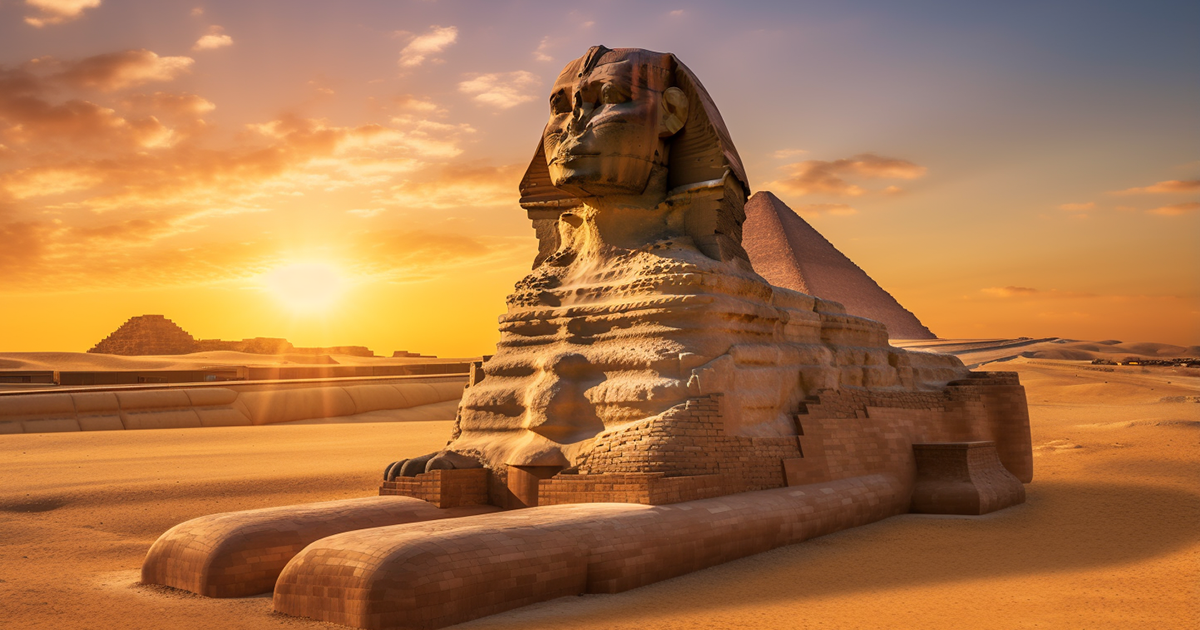When thoughts drift to Egypt, one’s mind envisions colossal pyramids, ancient burial sites, and mesmerizing statues. Among these iconic marvels stands the grand Sphinx, a monument that has captivated generations worldwide for ages.
Sitting proudly as a protector on the Giza Plateau, this majestic statue, embodying a lion’s body with a pharaoh’s head, holds a secretive tale that has intrigued minds for centuries.
Perched on a plateau to the west of the Nile River in Cairo, the Sphinx watches over the Giza necropolis, an ancient complex believed to have emerged during Egypt’s Fourth Dynasty circa 2,550 BC. It serves as a spot where visitors gather daily to marvel at the magnificence of the pyramids and the Sphinx, a stone guardian cloaked in mystery.
One of the captivating features of the Sphinx lies in its monumental proportions. This massive statue spans an impressive 240 feet in length, towering to a height of 66 feet, and stretching 62 feet in width. Crafted from the natural rock of the Giza Plateau, this gigantic marvel pays homage to the skill of ancient artisans.

Despite years of fascination and study, the Sphinx remains an unsolved enigma. Archaeologists and Egyptologists have devoted their lives to unraveling its mysteries, but the Sphinx steadfastly guards its secrets.
A significant obstacle in deciphering the Sphinx’s mysteries arises from its prolonged burial beneath the sands of time. For much of its history, the Sphinx remained buried up to its neck in desert sands, concealing its truths.
Even Emperor Napoleon gazed upon it when it was partly obscured in the 18th century, reigniting curiosity in ancient Egypt.
It wasn’t until the 1920s that a team of archaeologists, led by Emile Baraize, successfully revealed the Sphinx from the desert sands, unveiling its complete grandeur to the world. This moment marked a pivotal shift in our comprehension of this ancient monument.
One prevailing theory put forth by archaeologists suggests that King Chephren carved the Sphinx around 2,500 BC as part of his burial complex. Nonetheless, the true origins of the Sphinx remain a subject of lively debate and speculation.
Some scholars refer to the Inventory Stela, a commemorative stone detailing Pharaoh Khufu’s renovations to the Sphinx, dating back approximately 4,600 years.

This raises questions about whether Khufu preceded Chephren, the commonly associated pharaoh connected to the Sphinx’s construction.
However, researchers are puzzled by the signs of erosion on the Sphinx’s structure. In contrast to the usual wind erosion on the Giza Plateau, the Sphinx displays indications of water erosion, hinting at an existence during a phase of milder Sahara Desert conditions with abundant rainfall.
This evidence leads some to contemplate that the Sphinx might date back to the conclusion of the last Ice Age, roughly around 10,000 BC, making it a relic from pre-dynastic Egypt.
Interestingly, the Sphinx holds the potential to unlock the mysteries of ancient Egypt’s obscured history, preceding recorded accounts. As scholars persist in examining this enigmatic monument, they strive to illuminate the Sphinx’s true age and purpose, gradually uncovering the millennium-old secrets it harbors.
Watch the Video Below:
Amidst the relics of an ancient civilization in Cairo, the Sphinx stands vigilant as a silent observer of time. Though its mysteries run deep, they continue to beckon those eager to unravel the puzzles of this remarkable monument. With its regal body and pharaoh’s visage, the Sphinx remains an everlasting source of marvel and fascination, urging us to delve into the captivating riddle of ancient Egypt.
